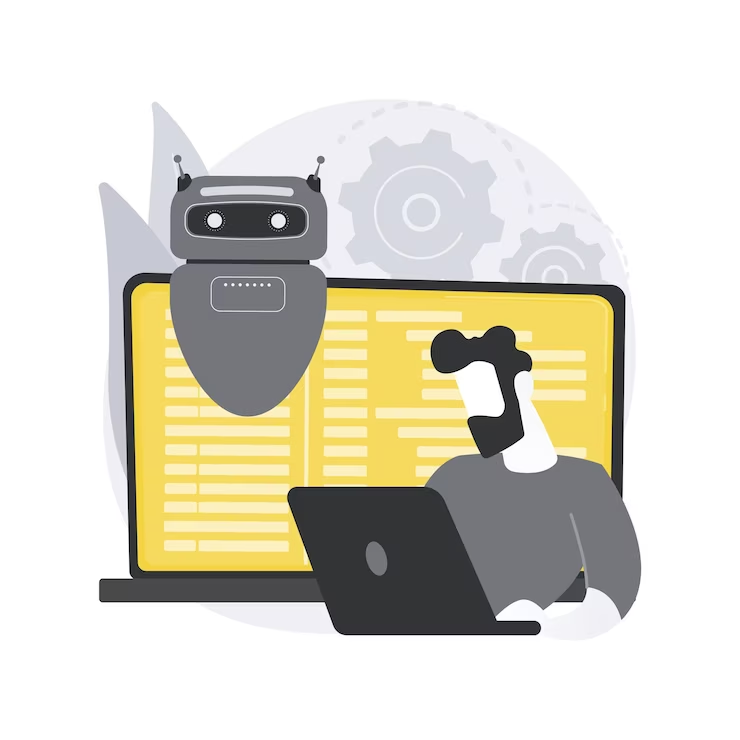

By Haley Holmes
Aug 17, 2023
What are Hyper-automated Virtual Medical Scribe Robots?
Hyper-automated virtual medical scribe robots combine machine learning, medical expert AI, robotic technology, clinical models, and cross-language interfaces to provide advanced support during clinical encounters. These robots possess expertise in the form and content of medical interactions and utilize neural network techniques and specialized algorithms to classify and extract data accurately. The primary goal is to offer perfect documentation, improve outcomes, ensure regulatory compliance, and meet payer requirements.
How Hyper-automated Virtual Medical Scribe Robots Work
These robots operate in the background, automating documentation tasks while allowing healthcare professionals to focus on providing face-to-face care to patients. Unlike other tools, they can handle multiple speakers, varied accents, interruptions, and other conversational variables due to their accurate speech recognition capabilities. Using proprietary conversation understanding layers trained on thousands of cases, these robots can summarize patient encounters and automate workflows effectively.
Hyper-automated virtual medical scribes do not require integration with electronic health record (EHR) systems. They enter data in a manner similar to traditional scribes, operating in real-time during patient interactions. By the time the conversation with the patient concludes, the documentation is complete, requiring only review and sign-off. The robots can even recognize and authenticate the healthcare professional's face, allowing them to use speech and hand gestures to expedite the documentation process and enter notes into the EHR within minutes. This technology ensures 100% HIPAA compliance, maintaining the highest level of security, privacy, and auditable records.
Benefits of Hyper-automated Virtual Medical Scribe Robots
The Intelligent Physician Knowledge Orchestrator (IPKO), a patent-pending technology, is used to create a fast and automated clinical documentation entry system into the EHR. IPKO utilizes auto machine learning engines to capture conversations and convert them into medical data for documentation purposes. This technology comprehends a doctor's observations and mimics an expert coder and scribe.
The field of medicine is continuously evolving, with new equipment, medical devices, and medications introduced regularly. Hyper-automated virtual medical scribes are designed to constantly learn and stay up-to-date with key terminology, coding standards, associated resources, and an ever-growing library of medical knowledge. This ensures that the process of medical data extraction is expedited and accurate.
By using a reliable, accurate, affordable, secure, and automated AI medical scribe solution, healthcare professionals can eliminate the need for extensive note-writing between patient visits and after hours, streamlining clinic processes and reducing burnout.
The Role of AI and ML in Hyper-automated Virtual Medical Scribe Robots
Hyper-automated virtual medical scribe robots leverage the power of artificial intelligence (AI) and machine learning (ML) to revolutionize healthcare practices. By using advanced AI and ML algorithms, these robots can perform a wide range of tasks traditionally carried out by human scribes, but with increased speed, precision, and effectiveness. This technology enables hospitals and clinics to significantly enhance productivity while improving the accuracy of medical records. By automating documentation tasks, healthcare professionals have more time to focus on providing quality patient care.
The flexibility of deploying these virtual medical scribe robots as software services allows medical facilities of any size to benefit from their capabilities. This AI and ML-powered solution paves the way for a new era in healthcare, where professionals can redirect their efforts toward more meaningful work, leading to higher patient satisfaction and improved employee morale.

Please fill out this form.
We will reach out to you within 24 hours

Haley Holmes

Haley Holmes

Documentation is an important daily clinical responsibility. In order to optimize patient care, physicians are always on the lookout for new ways to effectively and efficiently document patient visits.
The use of virtual medical scribes has become increasingly popular in the recent years, as medical practices across the country are on the constant lookout for ways to reduce clinical documentation overload, thereby improving overall productivity.
The clerical burden associated with EHR usage is attributed as the number one cause of physician burnout. We also know that physicians spend twice as much time on EHRs and other clerical tasks compared to the time providing patient care.